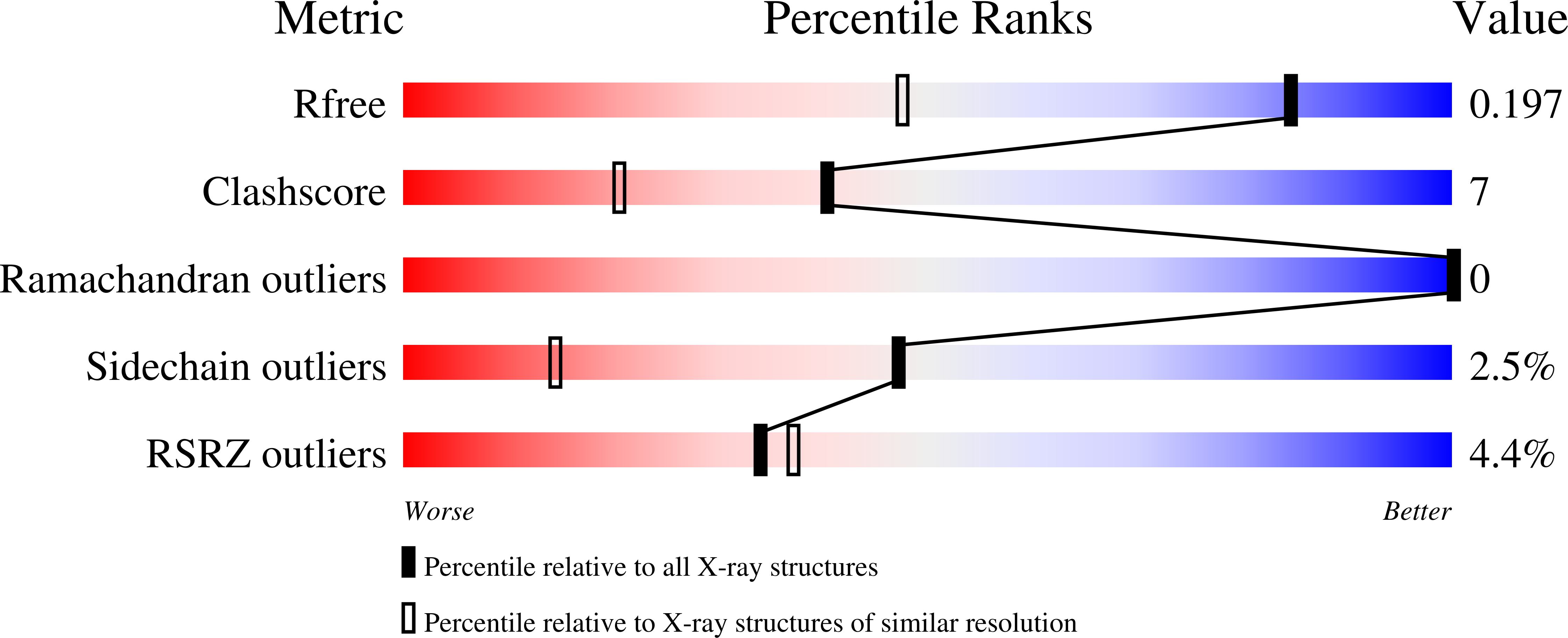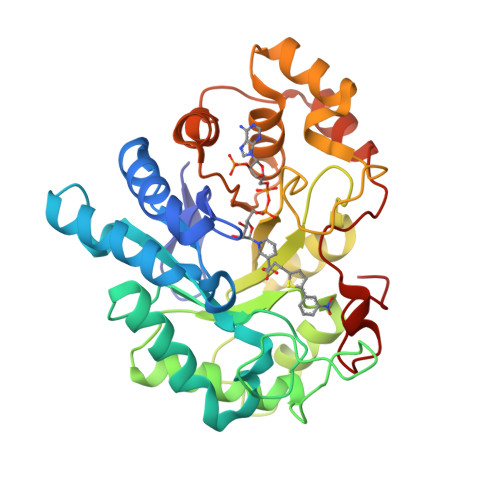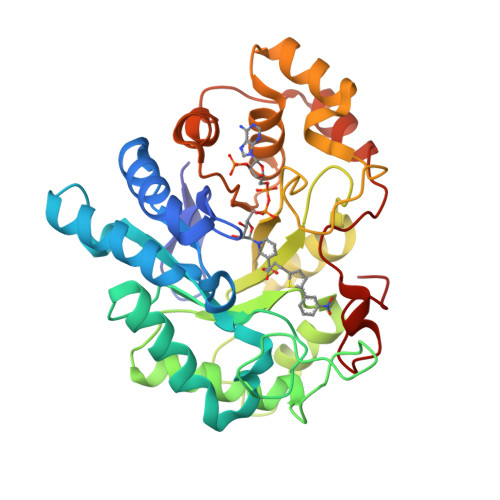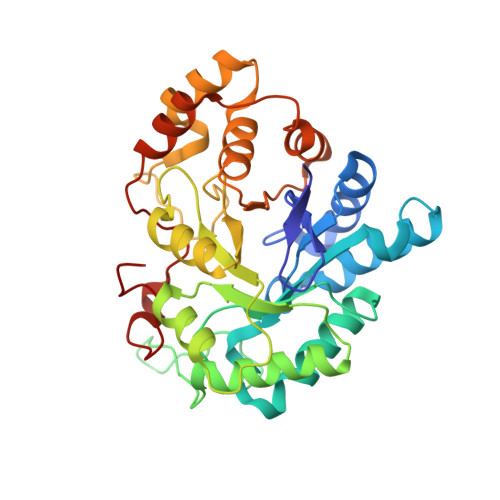Structure-Based Optimization of Aldose Reductase Inhibitors Originating from Virtual Screening
Eisenmann, M., Steuber, H., Zentgraf, M., Altenkamper, M., Ortmann, R., Perruchon, J., Klebe, G., Schlitzer, M.(2009) ChemMedChem 4: 809-819
- PubMed: 19301313
- DOI: https://doi.org/10.1002/cmdc.200800410
- Primary Citation of Related Structures:
3DN5 - PubMed Abstract:
Diabetes mellitus is a universal health problem. The World Health Organization (WHO) estimates that 150 million people suffer from diabetes mellitus worldwide in 2005. Long-term complications are a serious problem in the treatment of diabetes, manifesting in macrovascular and microvascular complications. Sorbitol accumulation has been proposed to be an important factor in the development of microvascular complications such as nephropathy, neuropathy, retinopathy or cataract. Catalyzing the NADPH-dependent reduction of glucose to sorbitol, aldose reductase (ALR2) is an important target in the prevention of these complications. The development of novel aldose reductase inhibitors is expected to benefit strongly from a structure-based design approach. A virtual screening based on the ultrahigh-resolution crystal structure of the inhibitor IDD 594 in complex with human ALR2 identified two compounds with IC(50) values in the low micro- to submicromolar range. Based on the known interactions between the ligands and their binding pocket, we simplified the lead structures to give the minimal structural requirements and developed synthetic pathways from commercially available compounds. The newly synthesized compounds were assayed for their inhibition of ALR2, showing inhibitory activities down to the nanomolar range. Crystal structure analysis of the most potent derivative of our series revealed insights into the binding mode of the inhibitors.
Organizational Affiliation:
Institut für Pharmazeutische Chemie, Philipps Universität Marburg, Marbacher Weg 6, 35032 Marburg, Germany.


















